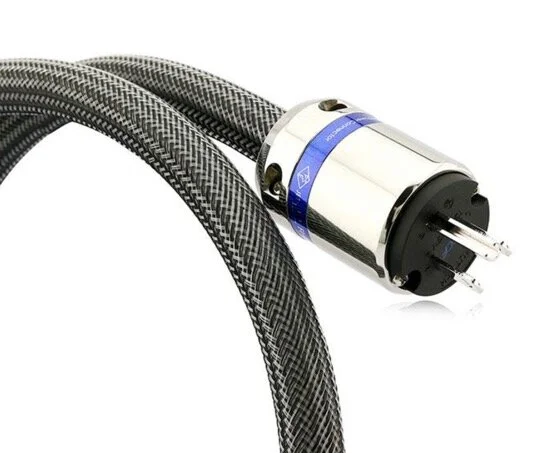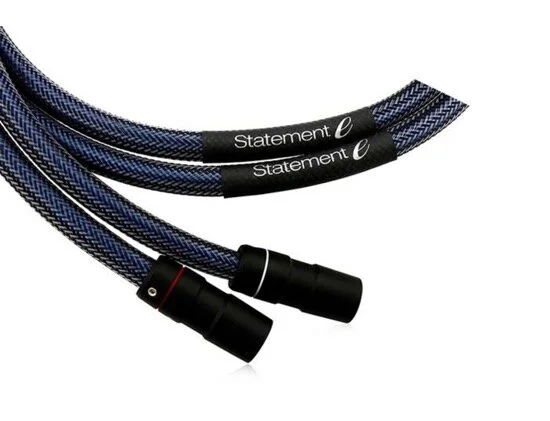Allnic Audio M-2500 Monoblock Amplifiers
The new Allnic Audio M-2500 Monoblock Amplifiers are available in three tubed versions: PX25, 300B (both Triode) and the subject of this review, KT150 (Pentode). The MSRP for the KT150 tube model is $14,500/pair.
Audiophilia has reviewed a number of Allnic products, preamps, phono stages and cables, but no power or integrated amplifiers. All reviewed so far have received Star Component Awards and a few were included in our Products of the Year lists.
Kang Su Park, owner and chief engineer, is a superb designer. More importantly for purchasers, there is a consistency of excellence across the various topologies and products I’ve heard. So, I was intrigued to receive two power amplifiers for review, the A-2000 25th Anniversary Power Amplifier (review forthcoming) and the monoblocks reviewed here.
The M-2500s are Park’s latest tube rectified, push-pull, high current amplifiers. The chassis are offered in 3 power output configurations utilizing a 5U4G rectifier tube, a 20WPC (PX25), 30WPC (300B), or the 100WPC (KT150). Prices for the PX25 and 300B Triode versions are $15,500/pair and $14,900/pair, respectively. All versions are Class A/B.
My Use
The M-2500s arrived in typical Allnic Audio fashion—double boxed using high quality, thick cardboard with handles cut in the sides for easy lifting, packed tightly with precision cut, dense foam. No component has ever arrived from Allnic’s South Korean factory damaged, chassis or tubes.
An Allen key is always supplied to unpack the foam and cardboard protecting the tubes in their chimneys. A detailed manual is included.
If you look carefully, the rectifier tube chimney is a Faraday Cage. The cage blocks microwave and EMF, both of which can affect gain tubes.
The M-2500 weighs in at 20Kg/per chassis. Not too heavy, but two folks lifting from the knees are better than one. Once the tube chimneys were free and clear of packing materials, I connected two Allnic Audio ZL-3000 Power Cables ($1400 each—review forthcoming), attached ins and outs, set the rear panel toggles for 4 Ohms and began break in. Interpreting the power was the Allnic Audio L-7000 Preamplifier ($16,500) and my new reference Alta Audio Celesta FRM-2M Loudspeakers ($15,000/pair).
As with other Allnic Audio products. output transformers are Permalloy. Only the highest quality parts are used.
The M-2500 differs visually from other Allnic pre/power products; most use a six piece aluminum chassis. The M-2500 uses four pieces of aluminum, with significant savings to the buyer, but with the same great looks and impeccable fit and finish. My units were in silver but as you can see from the cover photo above, the black version is equally stunning.
Notice the two small, yellow bias screws in front of the KT150 tubes. The biasing was factory set and remained in balance for the duration of the review. In order to provide constant current monitoring, Allnic uses an analogue current meter that is switchable to provide accurate monitoring of each KT150 tube.
Tubes are all NOS. Tube complement for each of my M-2500s:
KT150 X 2 (power tube)
6485 X 1 and 5654 x 1 (first stage)
6S4 X 2 (second stage driver)
5U4G X 1 (rectifier)
Break in took about a week of casual listening, all of it very pleasurable. I’d turn on the amps for about 20 minutes before listening. As such, I heard a detailed, warm sound almost immediately upon power up. The graceful but dynamic nature of the amplifiers remained over the review period. They were dead quiet and never fussed for a moment. With Allnic tube products, I find it’s setup and forget it.
My thanks to distributor David Beetles of Hammertone Audio for shipping these two large pieces for review.
Specifications
Output Power: 100w (8Ω load, at 1KHz)
Total Harmonic Distortion: Less than 0.01% at 1KHz, 1V RMS
Frequency Response: 20Hz – 50KHz Flat
S/N Ratio: -100dB (CCIR, 1KHz)
Damping Factor: 20 at 8Ω load at 1KHz
Voltage gain: +26dB
Input Impedance: 100KΩ (single-ended, unbalanced)
Input Sensitivity: 0.7V for maximum rated power
Fuses: 5A, 250V, 20mm slow-blow (IEC Mains)
Dimensions: (W x D x H) 440mm x 370mm X 260mm each
Features from the manual:
Powerful Driving Circuitry. Tubes and transformer characteristics are closely matched to complement each other.
Direct-heated Vacuum Tube Rectification. The M-2500s use a direct-heated 5U4G full-wave rectifier tube rather than a semiconductor diode in the rectification circuit.
“Full Engagement” Output Transformers. Conventional output transformers use pre-set secondary windings to accommodate 4, 8 and 16 ohm loudspeaker loads. However, these conventional transformers utilize only one secondary winding at a time, while the other secondary windings remain “idle”. This approach has two adverse effects. First, the output transformers are not working at their maximum efficiency, reducing their output relative to their potential. Second, the “idle” windings are not actually “idle”; they are subject to parasitic oscillations, producing their own “signal”. This undesirable electrical information is additive to the transformer’s output, distorting the amplified signal going to the loudspeaker. Allnic’s “Full Engagement” transformers address these issues by having 4 independent, secondary windings that are always fully connected, never “idled”. This means that all secondary windings are always connected to your loudspeakers, regardless of which output switch position you use.
Sound
The M-2500s sounded sweet out of the box (with a few hours powered on to acclimate to room temperature after shipping). After the first day, I gave them 20 minutes warm up before I began listening—casually for a week, then in review mode.
The beautiful, harmonic layering and timbral accuracy were obvious during the casual week, but improved slowly into the review period. Typical of fine tube designs running in Pentode with fairly efficient loudspeakers, there was power in spades. Driving my 87.5 dB Altas was an easy load—the amplifiers piloted them to volumes far too loud for comfort without any soundstage implosion, distortion or clipping. And though my music room is fairly small, experience tells me the M-2500s will have no problems driving your speakers to ear-bleeding levels in a medium or large size room in a family home.
But, with these beautiful instruments, why would you?
For sure, they are not low powered SET amplifiers—the pinnacle of tube playback—but this design gives you all the tube benefits with power in reserve and a bullet proof chassis. You can take these twins into battle.
To begin, I played my standard review fare. The M-2500s passed all tests with flying colours. Simply, they allowed the components upstream to sing & play with abandon. I’ve been very busy reviewing integrated amplifiers lately, mostly solid state. I’ve reviewed each unit as is or bypassed as a preamp or amp. Using the MBL N51 ($17,600) bypassed in amplification mode has remained my favourite this year. It would be difficult to tell the topology behind it and does not give away its solid state, Class D circuit easily—it is so smooth and endlessly powerful. And much like the M-2500s, allows the individuality and excellence of ancillaries to shine.
Park’s pentode configuration gives the listener a neutral palette. It has bass to spare (heard right out of the box), easily holding its own against the super dynamic MBL, with the upper registers sweet and diaphanous. Exactly what I’m listening for in a tube pentode design.
Even component killers like the bass drum solo (with octave tubas in fermata) in Le Sacre part 1 (LA Phil/DG/Dudamel/FLAC)—the only note to flap my Alta Audio Celestas—was of no concern to the M-2500s. I begin with a relatively low volume to test the waters, then graduated to ‘holy crap, just listen to that!’ territory. The normally bullet proof Altas gave out well before the Allnics. The 100 watts is plenty of power, especially in light of Allnic's ‘don’t fudge the numbers’ philosophy. You’ll get the full 100. I never heard clipping.
I’ve been building up my chamber music vinyl collection over the past six months. It was sorely lacking. After hitting Discogs on speed dial, it’s now up to par. Intimate music venues with small acoustic groups are where SET amplifiers shine. Not too much demand for the low power, but the musical connections are real. All types of chamber music sounded glorious with the more powerful KT150s. Instrumental timbre was beautifully fleshed out—immediacy and connection from string quartets, especially, were wonderful.
Conclusion
Allnic’s latest monoblock creation is in line with other Kang Su Park products I’ve reviewed. Wonderful sound, tried and tested design, with warranty and support. The monoblocks are not massive, yet large enough that you’ll need rack space with lots of ventilation—better still, buy a couple of dedicated amplifier stands and let them sparkle and shine for all to see.
For monoblock amplifiers of this design heritage and in comparison with other very expensive two chassis amps, they’re well priced at $14,500/pair. As such, they are Intended for the dedicated audiophile aspiring to great sound. If your journey is not quite there, they are definitely worth saving for. Very highly recommended.
Further Information: Allnic Audio







